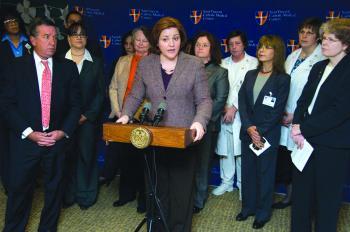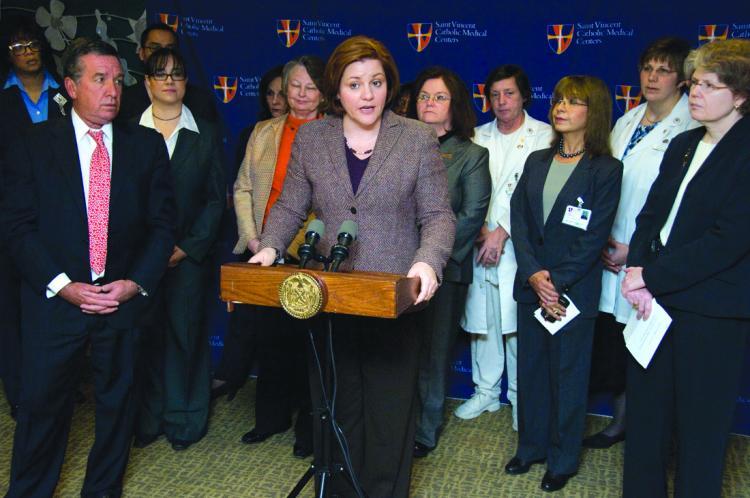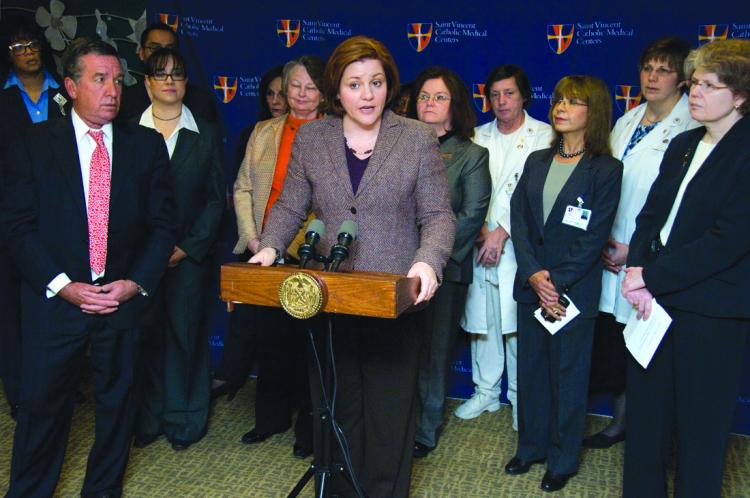NEW YORK—City Council Speaker Christine Quinn announced a five-year partnership with CUNY that will increase the university’s teaching capacity to train an additional 100 nursing students a year. Quinn alluded to the plan in her State of the City Address last month.
Nationwide, colleges and universities are finding it increasingly difficult to accommodate the tide of potential nursing students. They are forced to turn away a number of young people who could fill nursing jobs. Meanwhile, nurses already working are getting closer to retirement age. Add to that a population of aging baby boomers who demand increasing care, and you’ve got a perfect storm in health care.
Here in New York, the situation is not much different. CUNY trains and graduates 1,600 nursing students a year, but has to turn away 575 equally qualified and willing candidates due to lack of nursing teachers.
Other colleges and universities are in similar situations due to budget restraints. According to the National League for Nursing, 99,000 qualified nursing applicants were rejected from nursing schools across the country last year because of schools’ limited resources.
What the Speaker’s initiative would do is let CUNY pull five to ten seasoned nurses from the city’s hospitals and have them teach as guest faculty. Together, they would be able to train 100 new nurses a year, or 500 in the plan’s five-year span. Though 500 is not enough to fill the shortage, it is one step that will help, Quinn said.
She said the initiative is an obvious action that can bring about immediate change. “We can’t, in our quest to create new jobs, overlook this need. We have vacant jobs.”
Nurses who are selected for the teaching spots would be able to keep their benefits with their hospitals while teaching.
Of the city’s 63,000 existing nurses, 17 percent are over 55 years old and are expected to retire in the next five years. The problem has persisted since the turn of the millennium. The effect of the nursing shortage can be seen in the quality and speed of care.
A 2000 survey of registered nurses conducted by the American Nurses Association (ANA) found that nearly half of respondents are facing increased pressure to accomplish work, and even skipping meals and breaks to care for patients. Fifty-six percent reported that their time spent with patients has decreased.
The Speaker’s move follows closely upon the heels of AARP’s announcement of a similar program also aimed at addressing the shortage. The AARP announced on Feb. 27 the formation of a 20-member coalition, comprising businesses, consumer organizations, and health care providers, that will seek funding to increase nurse training.
The Council’s next task to further the initiative is to secure $500,000 to $1 million in budget funds for the next fiscal year.








Friends Read Free